Chicken Masala, or the Indian Murgh Masala is a delicious homemade chicken curry cooked in a spiced and spicy sauce that is flavourful and rich. It's the most basic chicken curry recipe that is wonderful in its simplicity, and it rivals any restaurant curry.
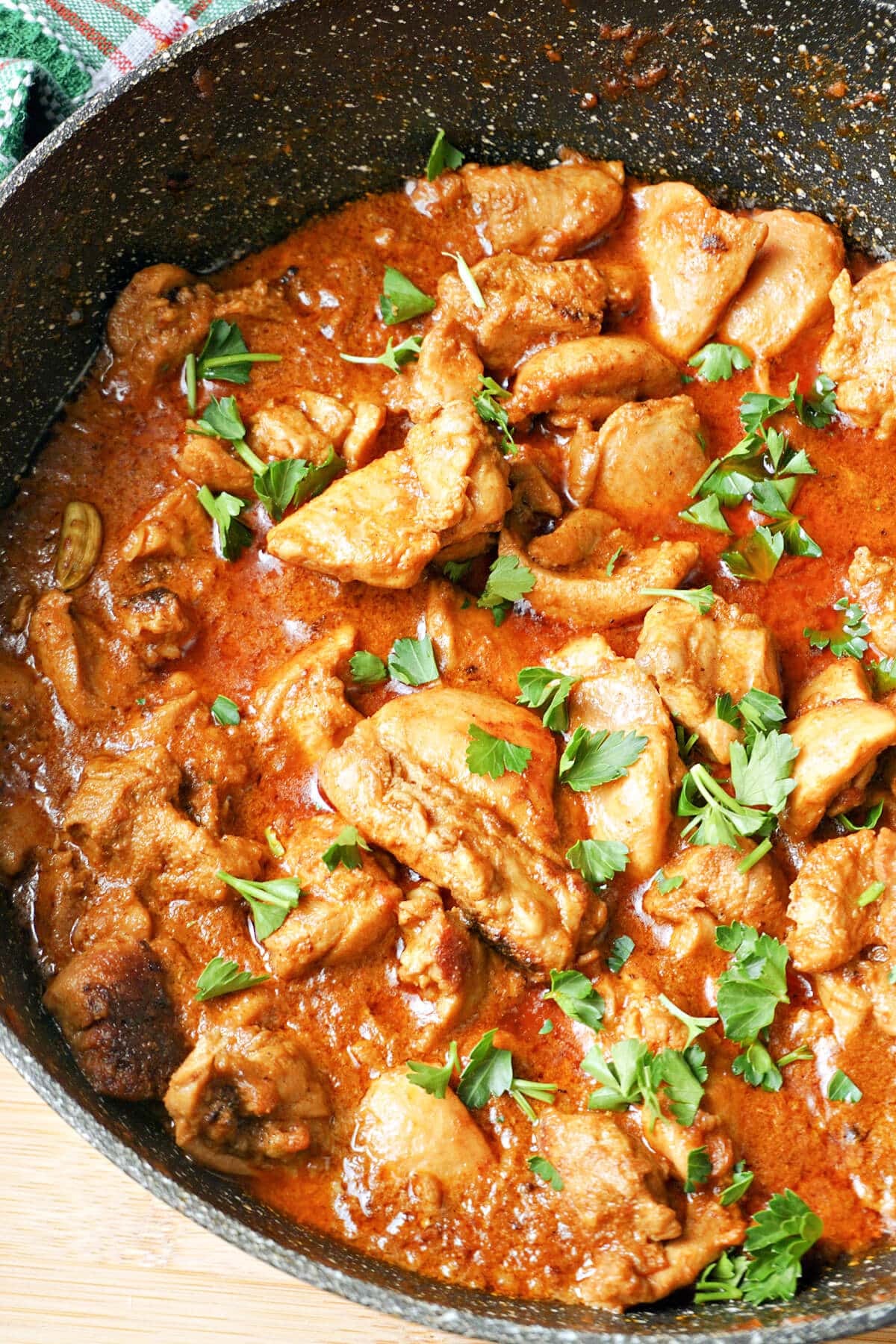
Jump to:
What is chicken masala
Masala is a Hindu word for spice, so this chicken masala dish simply translates at chicken cooked in spices. While the Western term curry applies to any Indian-style dish cooked in a spicy/spiced sauce, this is a basic recipe that can be tweaked to create your favourite curry recipes.
My chicken masala is based on a simple curry sauce made of onions, garlic, ginger and tomatoes, and an abundance of earthy spices that make this dish incredibly flavourful and soothing.
I opted for boneless, skinless chicken thighs, as they are really tasty and juicy, and I chopped them up into bite-sized pieces. You can also use bone-in thighs, although I would still go for skinless.
The trio onion, garlic and ginger create the very base of any good curry, while the cardamom pods, bay leaves, cloves and cinnamon sticks give an authentic touch to this Punjabi-style dish. Ground turmeric, cumin, coriander and garam masala are other common addition to a good curry.
Ingredients used
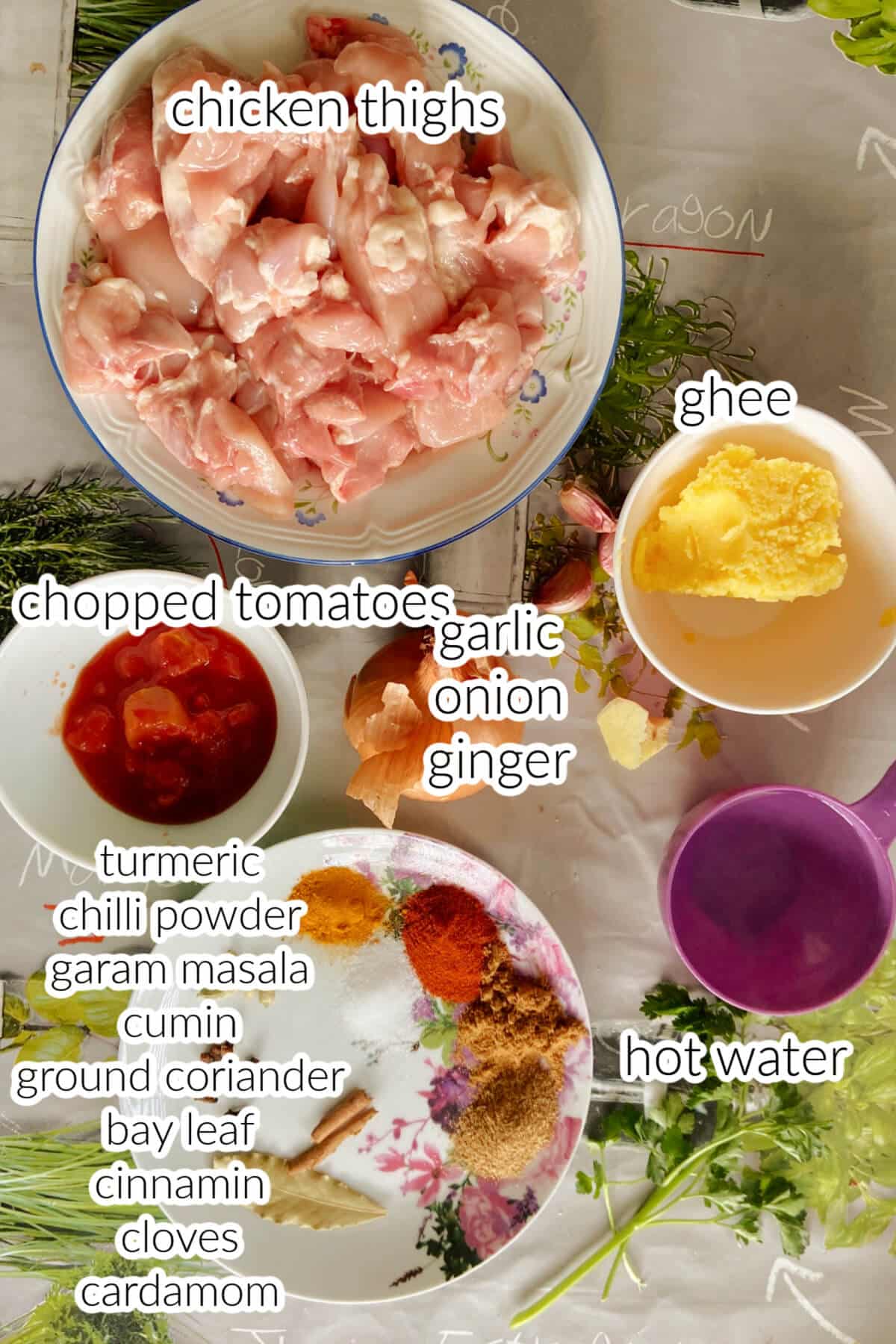
- chicken thighs -boneless, skinless, chopped into chunks
- onion - I used a large onion, or you can use 2 medium onions
- garlic - the more the better
- fresh ginger - peeled
- chopped tomatoes
- spices: cardamon pods, bay leaf, cinnamon stick, turmeric, cumin, garam masala, ground coriander, chilli powder, cloves
- salt & black pepper
- fresh parsley or coriander - for garnishing
- ghee - for frying
Variations
Fresh tomatoes are the more common addition to a curry sauce, but as I don't like the texture and taste of fresh tomatoes in Winter, I opted for tinned chopped tomatoes, and that was a great choice.
However, if you do want to use fresh tomatoes, especially if they are in season, I would use one large tomato, or 2 medium ones. If you use cherry tomatoes, I would use half a cup.
I absolutely love ghee, it has a subtle aroma that gives so much taste to the sauce. However, if you don't have ghee, you can use any vegetable oil of your choice, or a combi ghee and oil - best to use oil with a high smoking point.
Step-by-step photos and instruction
- add the peeled and quartered onion, garlic and ginger to a blender and blitz to a paste - alternatively, if you don't have a blender, just chop them finely
- heat up the ghee in a large pot, add the bay leaf, cloves, cardamom pods and small cinnamon stick
- fry them for 30 seconds until they release their flavour
- add the pureed onion mixture to the pan, and stir until it turns golden
- add the rest of the ground spices and mix well
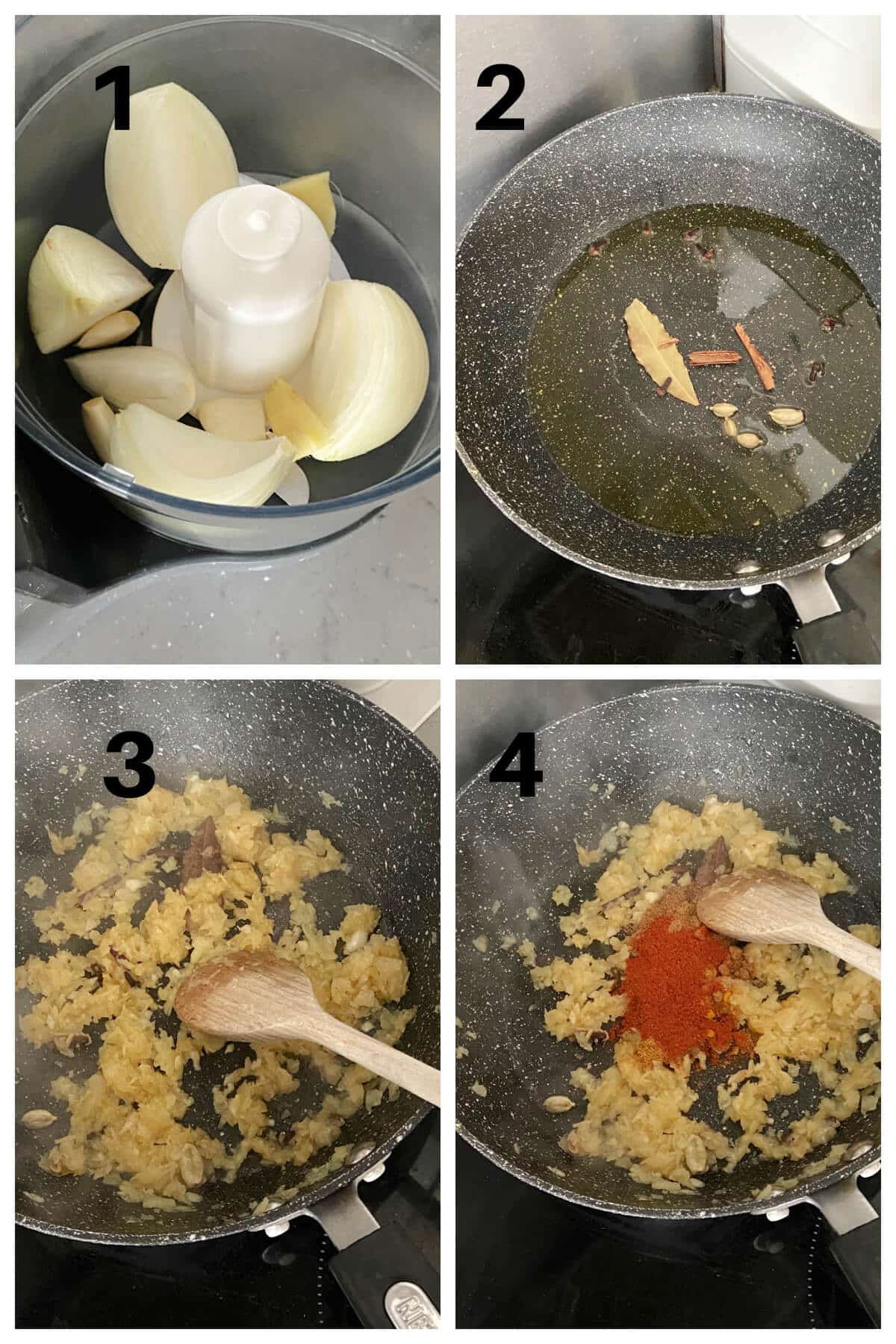
Would you like to save this?
- fry everything for a further 30 seconds so that you get a nice coloured paste
- add the chopped tomatoes, and mix well
- in go the chicken pieces - give everything a good stir so that the chicken is fully coated in the paste
- place a lid on the pan and leave it to cook until the chicken releases all the liquid, stirring occasionally
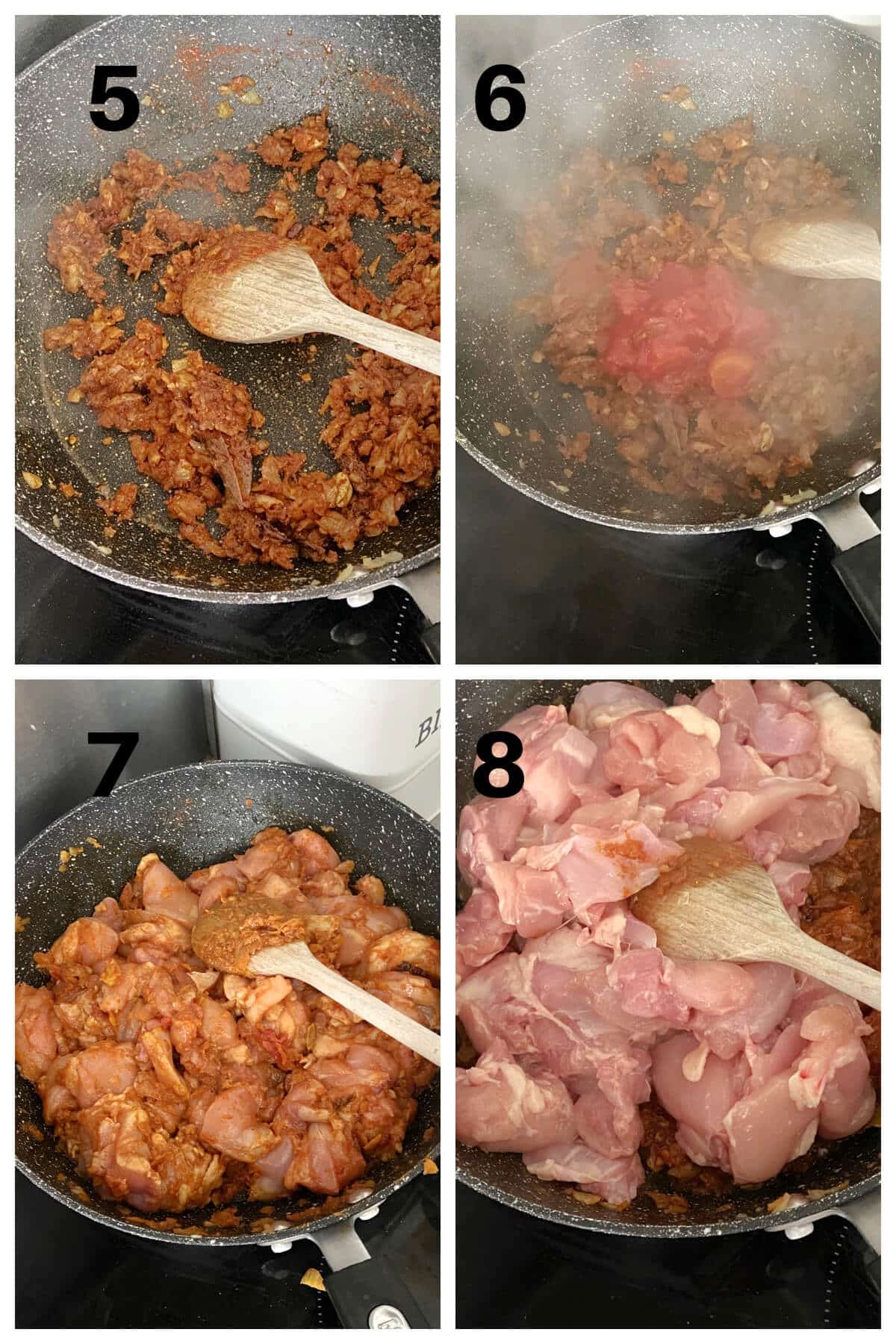
- once all the liquid from the chicken is released and cooked until it evaporates, add the hot water, give it a stir, and leave it to cook again for 15 minutes
- if you wish to add yogurt for a creamier touch, you can do so now - I prefer to mix the yogurt with a bit of the hot liquid from the sauce to avoid curdling
- garnish with fresh parsley or coriander and serve with basmati rice, pilau rice, flatbread or naan bread or so on
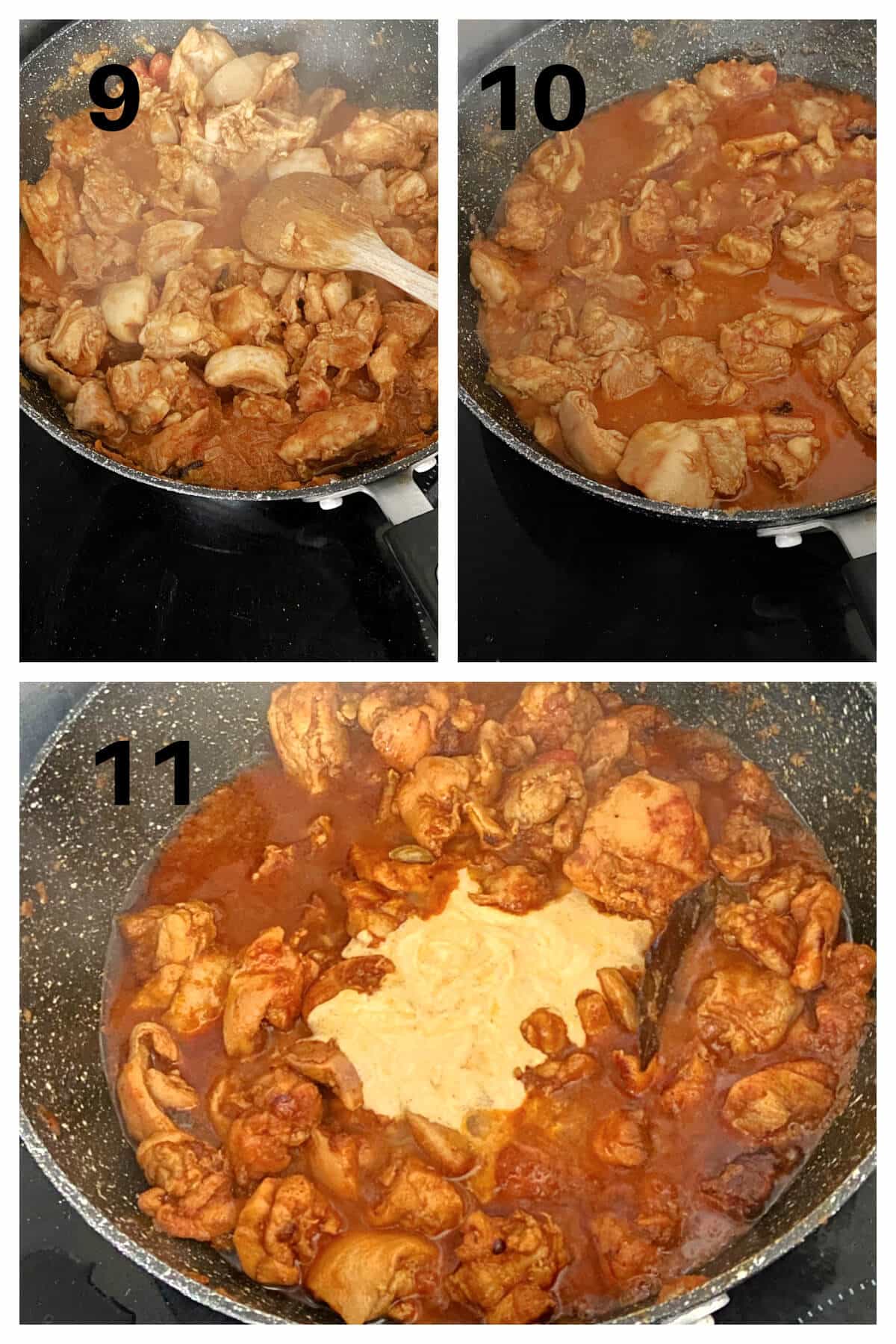
Expert tips
If you see oil floating on the top of the sauce once the dish is ready, not to worry, that's a sign that the curry is cooked well and you have done a great job.
The oil is essential for a good rich curry sauce, and that happens once the water is evaporated and the oil separates - you can spoon it off if you like.
Do no add the hot water straight after the chicken has been added to the pan - it is crucial to let the chicken release its liquid firm and wait for it to evaporate before adding any more liquid.
Once the masala is ready, you can scoop out as much of the whole spices as you can - the cooked cardamom pods, cinnamon stick and cloves are pretty bitter, and should not be eaten as such.
Recipe FAQs
While there are thousands of variations out there, the very basic ingredients in a curry sauce are fresh onion, garlic and ginger. Whether you blitz them into a paste or just chop them, they constitute the base for any great masala sauce. Spices like cardamom, cloves, cinnamon, bay leaves, turmeric, cumin, ground coriander and chilli are also important to create a wonderful recipe.
I absolutely recommend this step - the whole spices will release more flavour this way and add a wonderful touch to the whole dish.
No! Add the chicken raw, and cook it until it releases its liquid and evaporates completely, before adding any more liquid.
Other chicken curry recipes
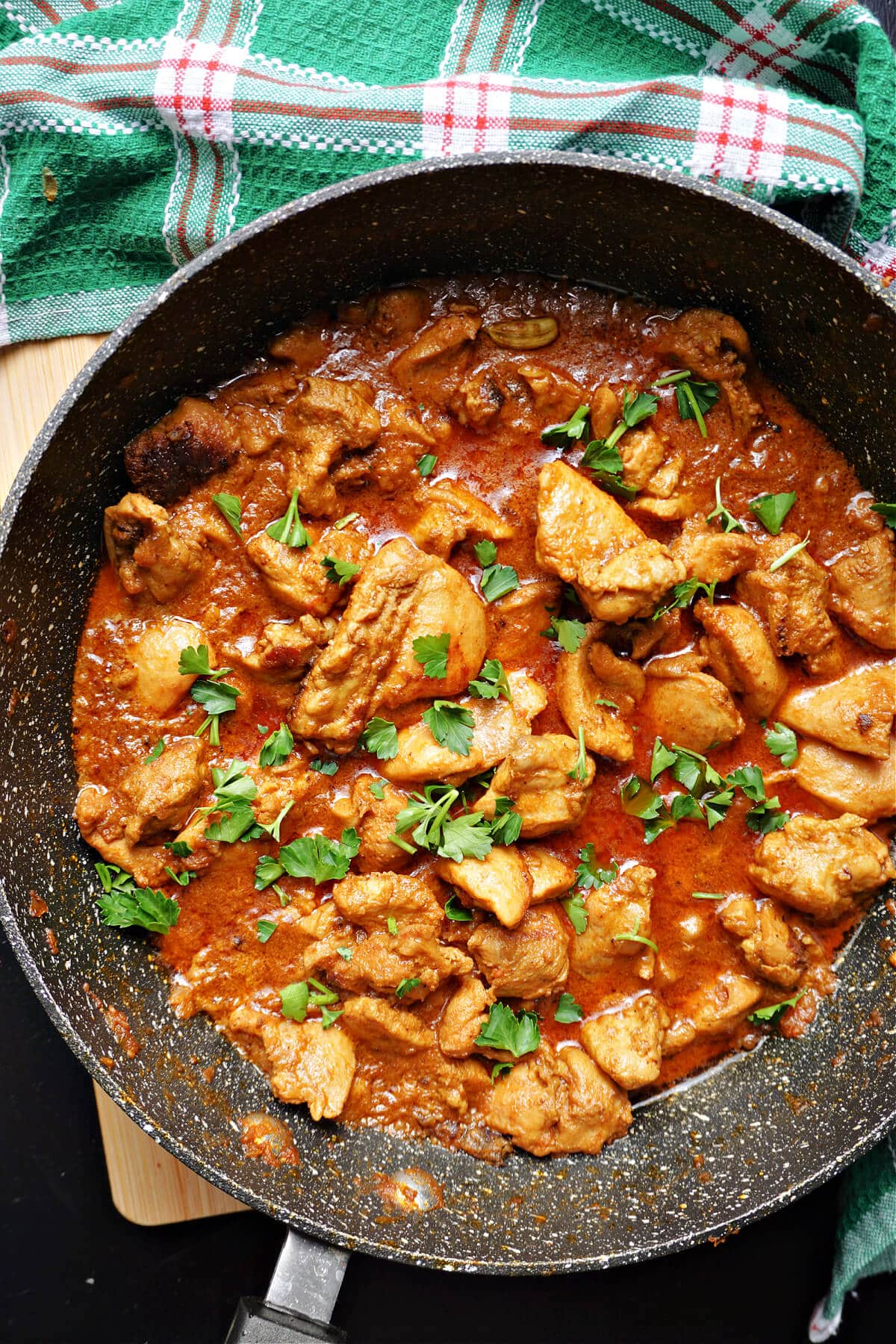
If you’ve liked this recipe or any other recipe on the blog then don’t forget to rate the recipe and let me know how you got on in the comments below, I love hearing from you! You can also FOLLOW ME on FACEBOOK, INSTAGRAM , YOUTUBE, TIK TOK , FLIPBOARD and PINTEREST to see more delicious food and what I’m getting up to.
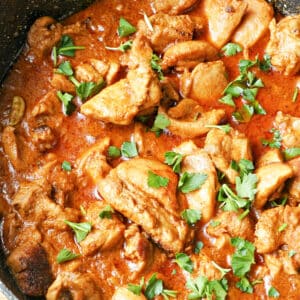
Chicken Masala
Ingredients
- 1 kg chicken thighs, boneless, skinless, cut into chunks (2.2 lb)
- 1 large onion
- 3 cloves of garlic
- 2 cm fresh ginger (1 tablespoon)
- ½ cup chopped tomatoes
- 3 tablespoon ghee ( or vegetable oil)
- ½ teaspoon salt
- ⅛ teaspoon ground black pepper
- 1 cup hot water
- 1 tablespoon fresh parsley or coriander
- 2 tablespoon plain yogurt ( optional)
Spices
- 2 bay leaves
- 5 cloves
- 4 cardamom pods
- 1 small cinnamon stick
- 1 tablespoon garam masala
- ½ tablespoon chilli powder
- 1 tablespoon ground turmeric
- 1 tablespoon ground coriander
- ½ tablespoon ground cumin
Instructions
- Peel and quarter the onion, garlic and ginger and add them to a blender.
- Blitz everything to a paste.
- In a large pan, heat up the ghee, add the bay leaves, cinnamon stick, cloves and cinnamon and fry them for 30 seconds until they release their flavour.
- Add the onion paste and give everything a good stir, then leave to cook until the onion is translucent, stirring occasionally.
- Add the spices, stir well, and leave to cook for a further 30 seconds.
- In go the chopped tomatoes, give everything a good stir.
- Add the chicken, and mix well to coat it into the tomato paste.
- Place a lid on, and leave the chicken to cook until it releases all its liquid and it evaporates - stir occasionally.
- Once all the chicken is dry, add the hot water, give everything a good stir, and leave to cook for a further 15 minutes on a medium heat.
- If you wish to add yogurt at this stage, you can do so - I prefer to mix it with a bit of the hot liquid from the sauce to avoid curdling.
- Garnish with fresh parsley or coriander.
Video
Notes
- If you see oil floating on the top of the sauce once the dish is ready, not to worry, that's a sign that the curry is cooked well and you have done a great job.
- The oil is essential for a good rich curry sauce, and that happens once the water is evaporated and the oil separates - you can spoon it off if you like.
- Do no add the hot water straight after the chicken has been added to the pan - it is crucial to let the chicken release its liquid firm and wait for it to evaporate before adding any more liquid.
- Once the masala is ready, you can scoop out as much of the whole spices as you can - the cooked cardamom pods, cinnamon stick and cloves are pretty bitter, and should not be eaten as such.

Leave a Reply